Chances are you probably did sit-ups way back in gym class, long before you ever thought about developing your core musculature or picking up a barbell to gain strength.
The classic sit-up, despite being a foundational bodyweight-based exercise for the trunk, has sort of fallen out of the limelight in recent years in favor of its cousin the crunch or more “functional” alternatives like the plank.
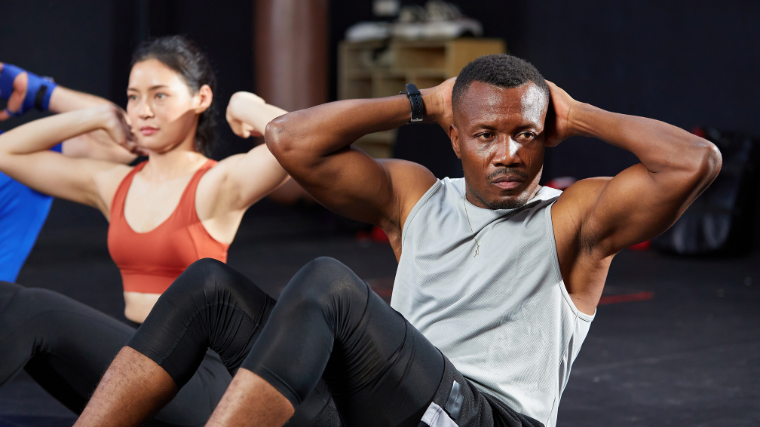
However, there’s no reason to reinvent the wheel if it still spins and gets you where you want to go. The sit-up is a hallmark of calisthenics training for a good reason, and there’s actually a bit more intricacy behind it than you might think. Here’s how to perform the sit-up properly, and what it can do for you.
- How to Do the Sit-Up
- Sit-Up Sets and Reps
- Common Sit-Up Mistakes
- Sit-Up Variations
- Sit-Up Alternatives
- Muscles Worked by the Sit-Up
- Benefits of the Sit-Up
- Who Should Do the Sit-Up
- Frequently Asked Questions
Editor’s Note: The content on BarBend is meant to be informative in nature, but it should not be taken as medical advice. When starting a new training regimen and/or diet, it is always a good idea to consult with a trusted medical professional. We are not a medical resource. The opinions and articles on this site are not intended for use as diagnosis, prevention, and/or treatment of health problems. They are not substitutes for consulting a qualified medical professional.
How to Do the Sit-Up
At the most basic level, the instructions for the sit-up are in the name — you simply sit up. However, there’s more than one way to skin a cat and way more than one way to get yourself upright from a lying position.
To learn the sit-up properly, all you’ll need is some open space and your own bodyweight. You might consider bringing an exercise mat with you for comfort, though.
Step 1 — Brace and Dig
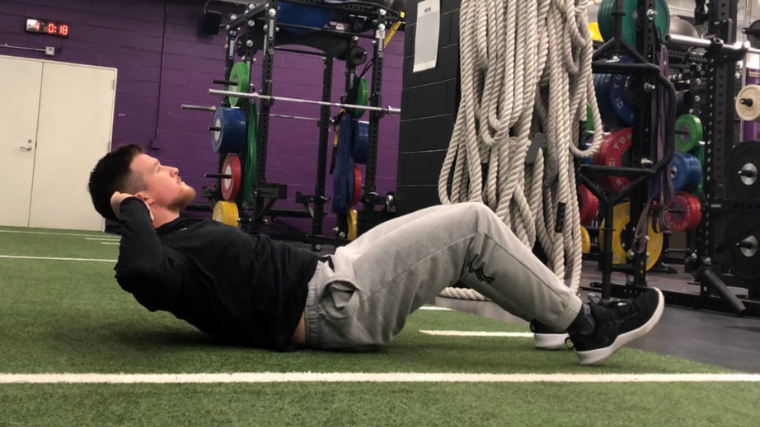
Start by lying flat on your back on the floor. Bend your knees slightly, between 30 and 45 degrees, and dig your heels firmly into the floor for support. Then, place your hands behind your head and compress your abdomen. Think about pushing your belly button into the floor to create a contracted “hollow-body” trunk.
Coach’s Tip: Your upper back should be slightly off the ground in the starting position.
Step 2 — Hinge Up
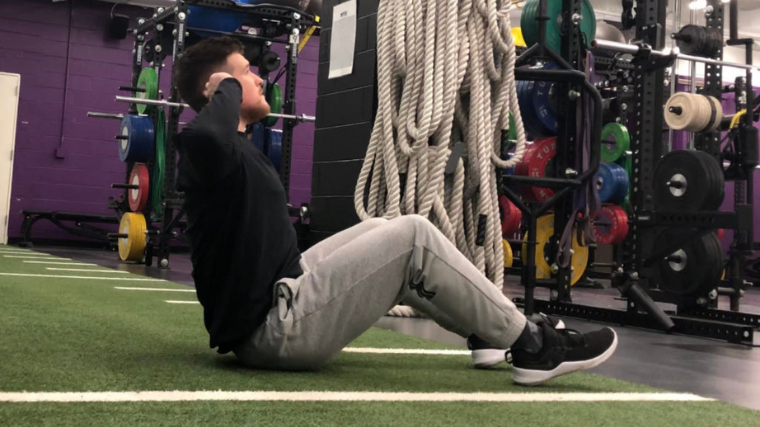
Once you’re set, initiate the sit-up by pulling your torso upward with your abs and hip flexors. Press your heels into the floor isometrically to balance yourself, and raise your body up until your torso is almost perpendicular with the floor.
Coach’s Tip: You may curl your spine slightly, but your trunk should remain mostly straight while you move.
Step 3 — Lower Yourself Slowly
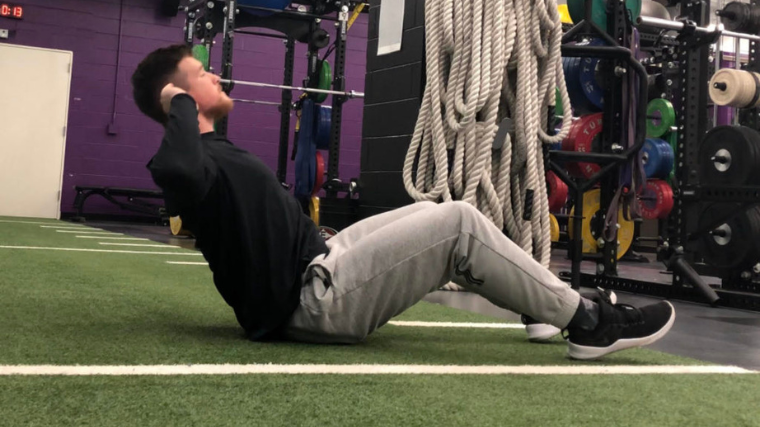
Pause briefly at the top of the exercise to ensure that you’re balanced and your abs are contracted tightly. From the top, lower yourself down to the floor slowly, leading with your shoulders rather than curving your lower back to lie back down.
Coach’s Tip: Keep your feet in contact with the ground at all times.
Sit-Up Sets and Reps
As a calisthenics movement, the sit-up isn’t the most versatile exercise out there. However, you can tweak your performance a bit to suit your needs. Here’s how.
- For Beginners: Perform up to 5 sets of 5 reps with a very slow tempo to learn the technique and understand how it feels to move your trunk separately from your legs.
- For Ab Endurance: Perform 3 or 4 sets of 12+ reps with limited rest to build muscular endurance in your abs.
Common Sit-Up Mistakes
The technical nature of the sit-up makes it a fantastic core movement if performed properly, but it’s also notoriously easy to bang out some sit-ups in a sloppy manner. Not only will this diminish the efficacy of the exercise, it may induce some unwanted lower back pain as well.
Curling Your Spine
Spinal health is among the most heavily-studied concepts in scientific journals, and some literal has observed a correlation between repeated back-bending (spinal flexion and extension) and degeneration or damaging of the intervertebral discs. (1)
Note, though, that many studies have remarked that an observable and consistent causative relationship between that joint action and that negative outcomes are hard to pin down in a laboratory setting. Moreover, modern research reviews tend to regard spinal flexion exercises as perfectly safe for healthy individuals who aren’t already injured in some way. (2)
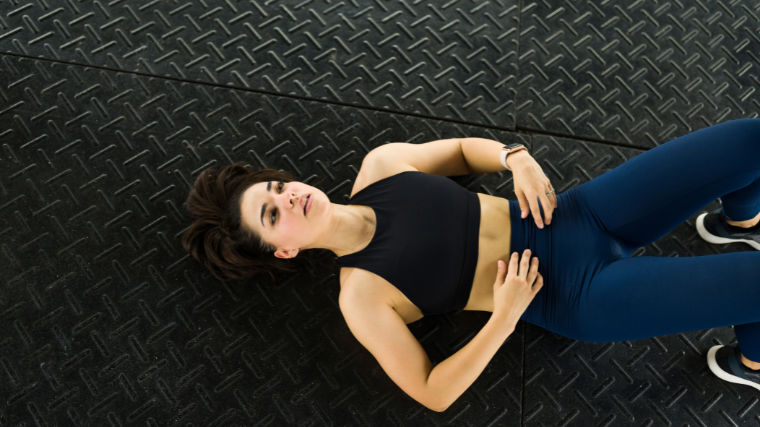
[Read More: The Best Bodyweight Exercises, + Workouts and Tips From a CPT]
So, while you probably can get away with turning into a shrimp during your sit-ups, you probably shouldn’t be dramatically curling your spine on each and every rep. It may not be the best movement for your back long-term, and it also isn’t an effective way to get the exercise done either.
Swinging Your Feet
If the standard sit-up is a bit too difficult, you might compensate for a weak core by adding some extra momentum and swinging your legs. There’s nothing inherently dangerous about this, but it does take away from the purpose of the exercise — targeted core engagement — in the first place.
Keep your heels firmly in contact with the ground during your sit-ups to ensure they’re doing what they’re supposed to do.
Sit-Up Variations
The standard sit-up can be easily tweaked to accommodate your personal fitness goals. Here are a few different variations of the movement that may be better suited to you.
V-Up
The V-up is, basically, a “long lever” version of the sit-up. In calisthenics and gymnastics training, long lever movements involve changing your posture to use the weight of your limbs as extra resistance.
As such, you can think of the V-up as a straight-leg sit-up. It will take more core strength and does involve some more lower back rounding, but it’s a good way to dial up the difficulty once sit-ups become a bit too easy.
Weighted Sit-Up
The sit-up may be regarded as a “beginner” movement, but there’s no reason you can’t make it more difficult by adding some external weight if you enjoy the exercise.
You can hold a dumbbell, kettlebell, or weight plate on your chest (make sure to fasten your feet against something as well) to add some external load to the movement pattern.
Sit-Up Alternatives
Sit-ups are all well and good, but they might not be right for you for a number of reasons. If you find the sit-up too hard (or too easy), are worried about your back health, or just find the movement dreadfully boring, try out some of these alternatives instead.
Dead Bug
The dead bug may look quite different from the sit-up on the surface, but the bones of the exercise are actually quite similar.
In a dead bug, your core is safely fixed in one position while your spine remains flush on the floor. You move your arms and legs independently of your trunk, which is actually fairly similar to the locked-in abdominal cueing of the sit-up.
If your lower back feels particularly sensitive to bending, the dead bug is a fantastic alternative.
Crunch
Sitting all the way up might be a tad too difficult for you. If that’s the case, you can turn down the difficulty and perform crunches instead.
The crunch is essentially a partial sit-up that focuses only on a limited amount of thoracic spine flexion. Your lower back should stay comfortably flush against the floor while you raise your upper back off the ground with your abs.
Muscles Worked by the Sit-Up
The sit-up is a core exercise through and through, there’s no doubt about it. However, it does engage a few other muscles that might surprise you.
Abdominals
Your rectus abdominis, or abs, are undoubtedly the most involved muscle group during the sit-up. Your lower abs in particular work hard to pull your ribcage and pelvis together to raise your torso.
However, a large portion of your core is engaged isometrically during the sit-up as well. There’s muscular tension at play to stabilize your chest and spine, but your upper abs, obliques, and serratus muscles aren’t actually shortening very much.
Hip Flexors
A proper sit-up will actually look quite a bit like a Romanian deadlift, good morning, or other hip hinge movement — and that’s definitely by design.
[Read More: The Best Ab Exercises & Workouts, According to a CPT]
Since good technique involves keeping your spine mostly straight during the sit-up, your hips are actually the joint that goes through the largest range of motion. Your hip flexors perform a lot of assistive work here to close the angle of your hips, which is why you’ll often feel sit-ups burning in the front of your upper thighs.
Benefits of the Sit-Up
It may not cure all your exercise (or six pack) woes, but the sit-up is performed in school gyms and military boot camps alike for a reason. It’s simplistic, straightforward, and works well.
Easy to Learn
There are far more complex core movements out there, true enough. But you can’t go wrong by starting from the ground up, literally, and using the sit-up to teach yourself proper core control and engagement.
You don’t need to move dynamically in space, stand on one leg, or brace against hundreds of pounds of external load. The sit-up is easy to teach and learn, making it a fantastic plug-and-play exercise for beginners.
Trains Your Abs
One of the chief biomechanical functions of your abs is to resist unwanted movement, as much it is to create movement itself. As such, you can use the sit-up as a teaching tool for proper core control.
Provided you’re hitting the form just right, the sit-up is a phenomenal way to learn to move your torso in space without simply rounding your back to get there.
Teaches the Hinge
It definitely doesn’t look like it at a glance, but a good sit-up is a hip hinge movement. Your hips use more of their range of motion in the sit-up than your spine does if you’re doing the exercise properly.
When paired with more traditional hinge exercises like the deadlift or kettlebell swing, the sit-up is an effective teaching tool for proper bodily control in space.
Who Should Do the Sit-Up
As a low-level core exercise, the sit-up often exhausts its usefulness pretty early on. However, that simply means the movement is perfectly suited for beginners, as well as anyone on a time constraint or who might be working out without equipment.
Beginners
First-time gymgoers need to do more than just gain muscle, build strength, or get more flexible (though those things are certainly integral to developing your overall fitness).
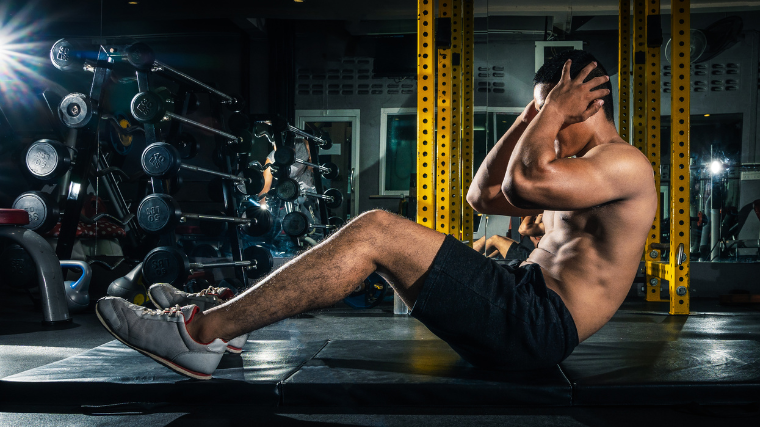
You need to learn to move and master your body as well, and the sit-up is a great way to get started. It’s harder than it looks if you do it right, since you may not be used to moving your trunk in any other manner than with your lower back.
Those On the Go
All bodyweight movements have one strong selling point: You can perform them literally anywhere. The sit-up, then, is a great way to keep your core tight and trained if you’re traveling or simply don’t have access to a robust arsenal of gym equipment.
If you have a few feet of open space, you have the ability to train your abs with the sit-up.
Gym Class Gains
Most people will be exposed to the sit-up very, very early in their athletic careers — maybe before you even thought you’d have an “athletic career” at all. It’s pretty easy to look past the exercise and opt for more intricate or flashy movements.
It also doesn’t help that the sit-up is quite easy to complete with bad form, which may contribute to its not-so-alluring reputation. However, understand that the science certainly doesn’t support the sit-up being “dangerous” or in any way harmful, as long as you’re in good shape to exercise to begin with (remember, consult your physician if you’re at all worried).
The sit-up might be worth a second glance. At worst, you’ll feel like you’re back in gym class. Best case scenario? You walk away with a stronger and tighter core, better bodily control, and one less excuse to skimp out on your exercise routine if you’re in a hurry and can’t make it to the gym.
FAQs
If you’re sold on the sit-up, power to you. Still have some nagging questions or concerns? Keep reading.
References
1. Callaghan, J. P., & McGill, S. M. (2001). Intervertebral disc herniation: studies on a porcine model exposed to highly repetitive flexion/extension motion with compressive force. Clinical biomechanics (Bristol, Avon), 16(1), 28–37.
2. Contreras, Bret MA, CSCS1; Schoenfeld, Brad MSc, CSCS2. To Crunch or Not to Crunch: An Evidence-Based Examination of Spinal Flexion Exercises, Their Potential Risks, and Their Applicability to Program Design. Strength and Conditioning Journal: August 2011 – Volume 33 – Issue 4 – p 8-18
Featured Image: Mangkorn Danggura / Shutterstock